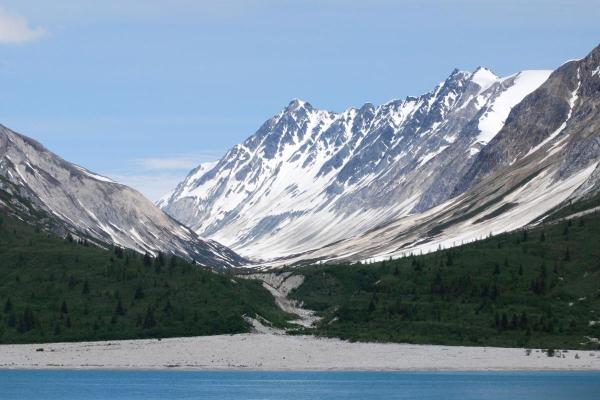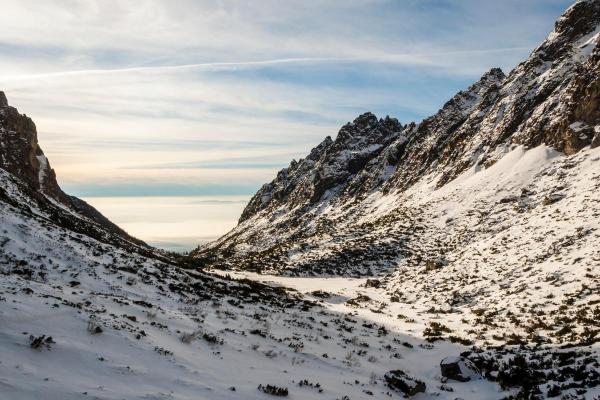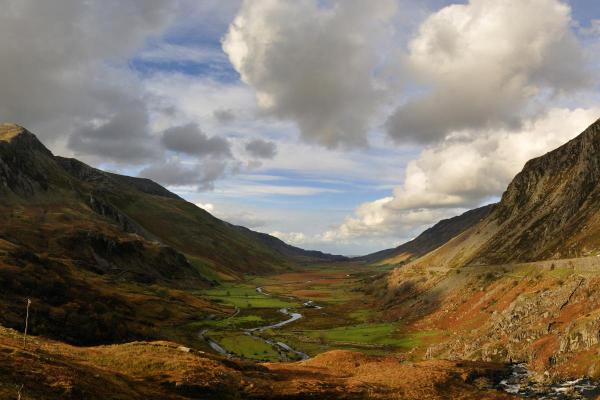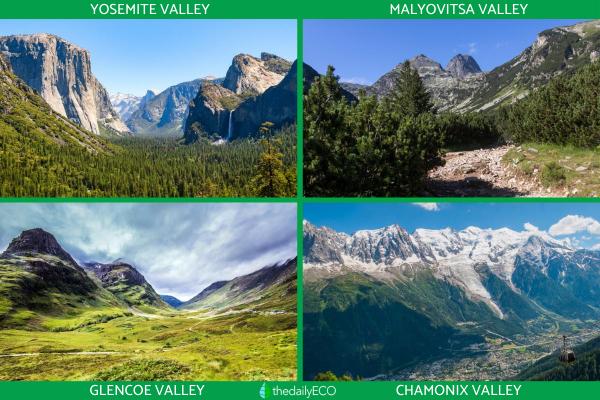
There are different types of valleys which differ due to their formation. Although most valleys are formed by erosion or tectonic movements, even these factors can be very different from each other. The resulting valleys take on their characteristic shape due to the nature of this erosion. If we see a U-shaped valley, we will know that it is the result of the erosive action of a glacier. For this reason, the terms ‘U-shaped valley’ and ‘glacial valley’ can be used interchangeably. Some of the world's most well known landforms involve U-shaped valleys, such as Yosemite Valley in the USA and Leh Valley in the Himalayas.
Learn more about their formation as thedailyECO asks what is a U-shaped glacial valley? We also look at their pats and some famous examples from around the globe.
What is a U-shaped glacial valley?
A U-shaped glacial valley is a type of valley formed by the action of moving glaciers over thousands or millions of years. As they can advance and retreat, they are capable of carrying rocks and other material with them. They are generally U-shaped in width and depth, often developing geographical features such as moraines and glacial lakes.
Read our related guide to what is a glacial moraine?

How is a U-shaped glacial valley formed?
We have already explained a little about what causes glacial valleys, but we explain more about the process of glacial formation and how they develop their distinct U shape.
1. Glacial movement
The glacier begins at height. It will then move toward lower elevations, influenced by gravity and incline. This movement is facilitated by a layer of meltwater at the base and internal deformation of the ice. As it moves, it begins to form the valley over thousands and millions of years.
2. Valley erosion
As the glacier advances, it erodes the terrain through two main processes:
- Abrasion: rocks and sediments trapped in the ice scrape and polish the rock surface of the valley, creating ridges and grooves.
- Plucking: ice adheres to the rocks on the bed. As the glacier moves, the ice tears off fragments that are then incorporated into the glacier.
These processes transform V-shaped river valleys into wider and deeper U-shaped glacial valleys. Discover more with our article asking what are river valleys in geography?
3. Transport and deposition of sediments
The glacier transports eroded materials and deposits them in different areas as it retreats. These accumulations are known as moraines. They are classified according to their location as lateral (along the edges of the glacier), central (formed by the union of lateral moraines from converging glaciers) and terminal (located at the far end of the glacier and marking its maximum extent).
4. Formation of the glacial valley
The result of this set of processes is a glacial valley with distinctive features such as a U shape, steep walls and secondary valleys that form waterfalls. Discover the difference between waterfalls and cascades in our related guide.

Parts of a U-shaped glacial valley
As they are a result of long-term geological processes, U-shaped glacial valleys will from distinct geological features. They include the following:
- Glacial cirque: this is the birthplace of a glacier, where the largest amount of snow accumulates and later transforms into ice. It typically takes the form of enormous circular basins and is located at high mountain peaks.
- Moraines: these are accumulations of till, the rock fragments of various sizes carried by the glacier. Their size depends on the material load carried by the glacier.
- Hanging valleys: these are tributary valleys that flow into the main valley from a higher level. They were formed by smaller glaciers. When the ice disappears, they remain hanging on the walls of the main valley. They often contain waterfalls.
- Glacial lakes (cirque lakes or tarns): these are lakes that form in depressions carved out by glaciers or where water has been retained after the retreat of the ice. They are generally common in glacial cirques or behind terminal moraines.
- Sheep rocks: these are rock outcrops polished and rounded by ice abrasion. They have one smooth face (upstream) and another abrupt face (downstream), indicating the direction of glacial flow.
- Glacial striations: striations are grooves produced by the abrasion and drag of fragments carried by the glacier. They indicate the direction of the glacier when it has retreated.
You can discover a feature of glaciers themselves with our article asking what is a serac in geography?
Examples of glacial valleys
Here is a list of ten important glacial valleys found around the world:
- Yosemite Valley (United States)
- Leh Valley (Northwest Indian Himalayas)
- Malyovitsa Valley (Bulgaria)
- Valley of the Vueltas River (Argentina)
- Alerce and Manso valleys of Mount Tronador (Argentina)
- Lauterbrunnen Valley (Switzerland)
- Glencoe Valley (Scotland)
- Khumbu Valley (Nepal)
- Chamonix Valley (France)
- Valle de los aposentos (Venezuela)

Difference between a U-shaped glacial valley and river valley
Although there are different types of valleys, U-shaped glacial valleys are often compared with river valleys. We explain their differences in terms of formation and other factors:
- Formation: a glacial valley is formed by the movement of a glacier that carries with it different types of sediments. A river valley is formed by the erosion and sedimentation caused by a river or stream over time.
- Process: the glacier acts abrasively on the terrain, carving and wearing away the rocks and sediments it passes through. It creates moraines, striations and other structures in this process. On the other hand, the watercourse shapes the terrain of a river valley through processes of erosion and sediment deposition.
- Shape: glacial valleys have a characteristic U-shape due to deeper and wider erosion compared to river valleys. River valleys are typically V-shaped in their upper reaches and may become wider and U-shaped or meandering in their lower reaches. We explain more with our article on what is a meander?
- Characteristics: glacial valleys are typical in high mountain areas or cold latitudes. This is because their conditions allow for the accumulation of ice over time and the subsequent formation of glaciers. In contrast, river valleys are common in plains, wide valleys or transition zones. They are continuously developed by the flow of river water.
We share the longest rivers in the world which also include features such as deltas and valleys.
If you want to read similar articles to What Is a U-Shaped Glacial Valley?, we recommend you visit our Environment (other) category.
- Margonari, L. S. (n.d.). Glacial Geomorphology in the Alerce and Manso valleys of Mount Tronador, Río Negro Province.